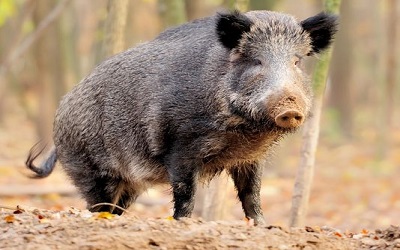PTE考生目前最大的问题之一就是练习题缺乏。除了有限的基本官方书(PLUS,Testbuilder, OG)之外,就没有题了。很多英语基础不是很扎实的同学很难找到练习材料。墨尔本文波雅思PTE培训学校专门为墨尔本,悉尼PTE考生准备了适合PTE听力阅读练习的科学60秒。各位PTE同学可以练习PTE听力中的summarise spoken text和PTE口语中的retell lecture,PTE听力口语-科学60秒-Frosty Moss练习记笔记技巧和复述。废话少说,下面开始:
听力内容:
60秒科学节目(SSS)是科学美国人网站的一套广播栏目,英文名称:Scientific American – 60 Second Science,节目内容以科学报道为主,节目仅一分钟的时间,主要对当今的科学技术新发展作以简明、通俗的介绍,对于科学的发展如何影响人们的生活环境、健康状况及科学技术,提供了大量简明易懂的阐释。
The standard story told about domesticating wild animals goes something like this:humansselected individuals with a desired trait—docility, for example and bred those animals togetherto produce offspring even more docile than their parents.
Eventually the breeders created a genetic bottleneck that separated domestic animals fromtheir wild relatives.
And they brought their livestock along as they spread across Europe and Asia.
But now a group of scientists has demonstrated that the story is far too tidy—at least when itcomes to pigs.
Pigs were domesticated from wild boar at least twice, in Anatolia in present day Turkey and inthe Mekong Valley in China, both about 9,000 years ago.
They arrived in Europe about 7,500 years ago.
For this study, researchers focused on European pigs.
They evaluated more than 600 genomes from European and Asian wild boars and domesticatedpigs.
And they found that, in Europe, the story of a bottleneck separating domestic from wildanimals does not fit the genetic data.
Rather, the model that does fit indicates that there was a frequent flow of genes from wildEuropean boars into the domestic population.
In other words, boars and pigs kept finding ways to get together.
The most likely scenario for the development of the modern pig genome includes gene flowfrom some species of European wild boars that are now extinct.
But their genes live on, on the farm.
The research is in the journal Nature Genetics.
The authors hope this study will prompt the use of genetics to evaluate the domesticationhistory for other species, including dogs and horses.
They say the incorporation of contemporary and ancient DNA into these modeling scenarioswill help elucidate the timing of the domestication of plants and animals and, “ultimatelysubstantially enhance knowledge of this fascinating evolutionary process.”





